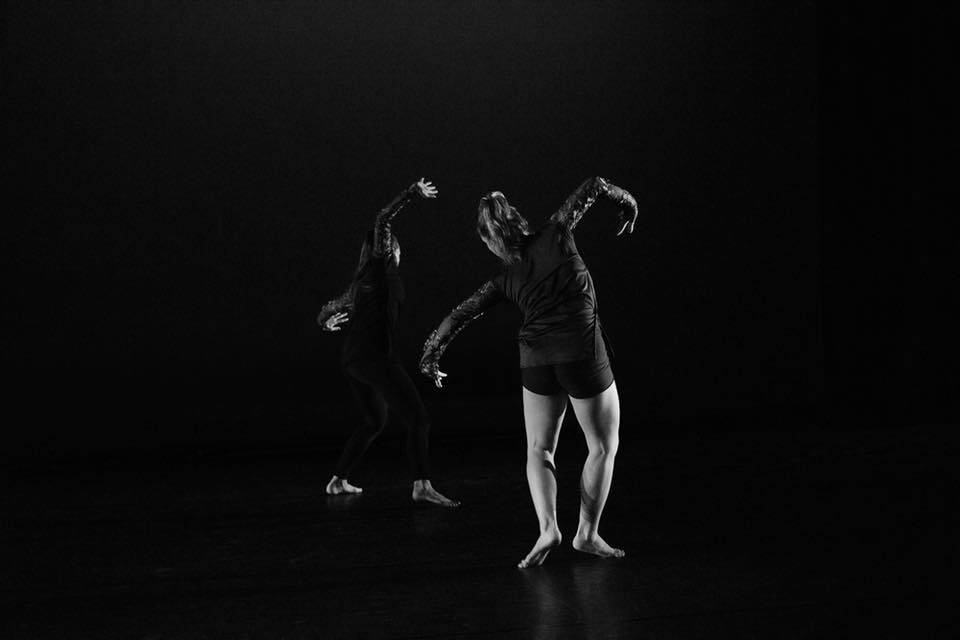The Ogden Symphony Ballet Association presented Collage Dance Collective, a decade-old company directed by Kevin Thomas that has, in their own words, “inspired the growth of ballet by showcasing a repertoire of relevant choreography and world-class dancers representative of our community.” Who is included in their community is perhaps hard to define, though one could carefully say that this company is challenging the Eurocentric elitism and lack of racial and economic diversity that has pervaded the art form for centuries. There have been many companies and individual artists that have pushed and continue to push who ballet is for, who can perform it, and whose stories it will tell: Alvin Ailey, Arthur Mitchell (Dance Theatre of Harlem), Alonzo King, Carlos Acosta, and Misty Copeland, to name only a select few.
Collage Dance Collective obviously takes its place among those who strive to usher ballet into an age of inclusivity, exposure, and diversity, and the executive director of OSBA, Emily Jayne Kunz, even encouraged us to read the bios in the program to notice “how far some of the performers have traveled to be with us.” This sentiment was further echoed when I overheard a fellow patron remark, “These dancers are not all trained in New York; that is where you usually come from if you ‘make it.’”
While I cringe to think of agreeing with that sentiment, I cannot entirely disagree, and even think back to my graduate studies when a New York-based performance artist came to the University of Utah and remarked, “All my friends thought I was falling off the face of the earth when I told them I was going to Utah.” Just as it brought me a level of satisfaction to have to drive forty miles from the bigger, “better” Salt Lake City to Ogden to see Collage Dance Collective, it also brought satisfaction to know that while the company was founded in New York, their home is in Memphis, and they are enriching that particular community with their outreach, virtuosic dancing, and quality programming.
Ella Suite Ella opened the show with a triptych: a duet, a pared-down solo, and a culminating trio. The piece, choreographed by Arturo Fernandez, celebrated the life of Ella Fitzgerald and thus featured her music (with Joe Pass). Fernandez has worked as ballet master for Alonzo King LINES Ballet for the past 25 years, and there is a recognizable connection in approach and aesthetic between his work and King’s: partnering based in contemporary ballet, lines that hit, undulation and extension with equal attention and value, and a clarity and focus in compositional structure. This was a short piece and a great way to begin the evening: embodied, exact dancing to Fitzgerald crooning, “How could I know about love, I didn’t know about you...”
The Rate in Which I Am, choreographed by Joshua Manculich, featured music by local artist and University of Utah faculty member Mike Wall (as well as Dustin O’Halloran) and was a choreographic highlight. The piece featured six dancers and an exploration of the spotlight, the overhead light revealing, concealing, and casting shadows. Just that morning, my three-year-old daughter had asked me, “Mommy, what comes first, the day or the night?” and the continuous play of light and dark left me wondering the same thing.
I was captivated by Manculich’s accessible yet refined sense of drama and tension, but I struggled to find footing in Nicolo Fonte’s Left Unsaid. This was the longest work of the evening and multiple sections were marked by the upstage curtain lifting gradually to reveal a white cyc. During one section, three women danced in the foreground while three men sat in chairs, fully clothed in black suits, watching the movement unfold. I tried to ignore swirling dialogues dissecting the power and implications of the male gaze and instead to appreciate the architecture of the space, the moving foreground cutting against stationary background, but I could not resist imagining an alternative version of this section: three women holding the space, watching, monitoring the movements of three partially dressed men.
Another section continued with a man and a woman and two chairs, initially set far apart on the diagonal. Throughout the duet, the chairs were moved together until the man and woman were reluctantly forced into proximity, their faces manipulated to confront one another as the ending image. True of other sections, the ending provided a clean resolution to what was previously established.
Left Unsaid was in many ways a multi-faceted theatrical work that perhaps deserves a second viewing to unwind theme, metaphor and image; regardless, I struggled to reconcile what was presented into a cohesive work. When the cyc was finally revealed, and then covered by a quick drop of the back curtain, it was like the boy who cried wolf; I failed to be convinced of the impact upon the wolf’s arrival.
The final two pieces, Lineage by Darrell Grand Moultrie and Wasteland by Christopher Huggins, were both large-cast numbers that showcased the technical virtuosity and absolute kinetic joy that Collage Dance Collective harnesses as an ensemble. At one point during Wasteland, I felt like I was going to jump out of my skin. The driving music, the ever-changing formations, and entrances and exits: it was spectacle in every positive interpretation of the word, and performed flawlessly. After a prolonged standing ovation, I began my drive back to Salt Lake, happy that I had been able to experience this company.
Ogden Symphony Ballet Association will next present Parsons Dance on March 3 at 7:30pm, at Weber State’s Val A. Browning Center for the Performing Arts.
Erica Womack is a choreographer based in Salt Lake, and an adjunct faculty member at SLCC.
















